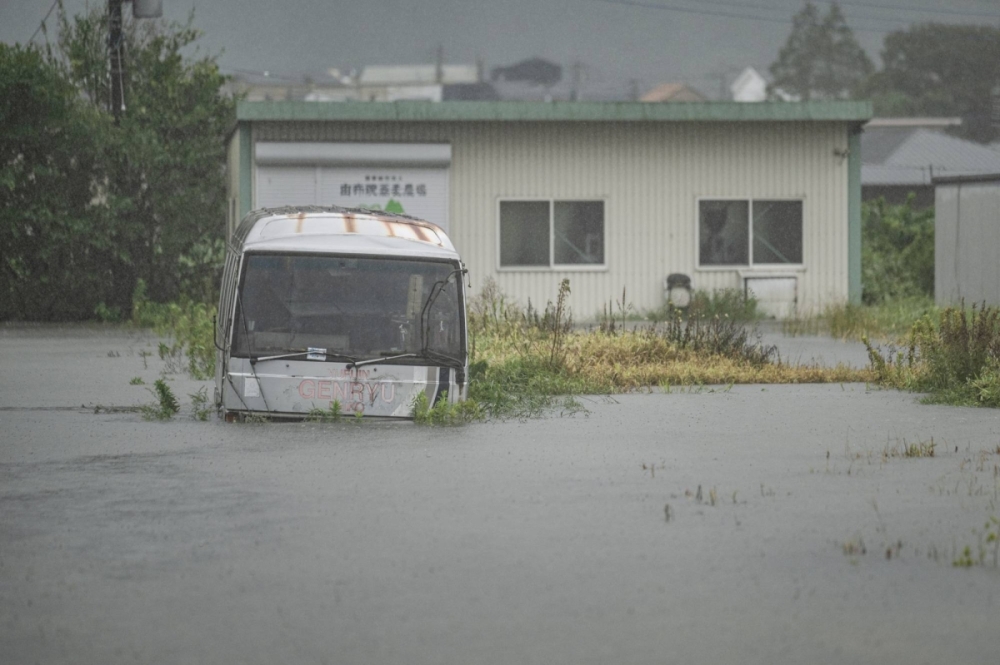How climate change affects Japan's typhoons

It may feel like Japan's typhoon season this year has been relentless, but the reality tells a different story. The number of these violent storms is actually dropping, as climate change alters global weather patterns.
Yet, experts are divided on what this means for the future.
While the Japan Meteorological Agency has recorded 18 tropical storms so far this season, Weathernews, a private weather forecasting company, has predicted this total to hit 21 by the end of the year. In 2023, the agency tracked 17 tropical storms, a significant drop from the average of 25.1 per year.
Japan's system for classifying typhoons differs from that used for hurricanes, and there are also differences in how the storms are discussed in Japanese versus English. In Japanese, storms are called typhoons as long as they are at least tropical storm strength, but the Japan Meteorological Agency makes a distinction between a tropical storm level system and a typhoon when distributing information in English.
While some parts of the world, such as the North Atlantic, have seen an increase in tropical cyclones, a 2022 study by the U.S.-based National Oceanic and Atmospheric Administration (NOAA) found that the annual number of such storms has decreased globally by 13% over the past century.
“Our research, which uses climate models, suggests that these changes aren’t just due to natural variability over time,” said Hiroyuki Murakami, a research scientist at NOAA and co-author of the study. “Human-caused climate change is playing a key role in shaping these new patterns.”
A modeling study by the Intergovernmental Panel on Climate Change (IPCC) demonstrated a 14% decline in cyclones globally if average temperatures rise by 2 degrees Celsius.
Meanwhile, Murakami also noted that a global decrease in tropical cyclones would not be uniform. “For instance, some studies project an increase in the number of storms in certain areas, like the Central Pacific,” he said.
Alexander Baker, a research scientist at the U.K.’s National Center for Atmospheric Science, said that there would be “significant regional differences” in the fluctuation of storm numbers, as “the latitude at which tropical cyclones form and reach their peak strength has shifted northward,” with an increase in storms spotted in the North Atlantic over the last 30-40 years.
However, Yoshie Nakamura, a spokesperson for Weathernews, cautioned against jumping to conclusions about Japan’s lower count.
“The low number of typhoons this year might be due to a weaker-than-usual monsoon trough in September and October ... which leads to weaker convective activity,” she said.
While fewer cyclones might seem like good news for Japan, experts agree that the storms that do form are becoming more severe, bringing stronger winds and heavier rainfall.
The IPCC predicts that storms reaching Categories 4 and 5 — the most severe — could increase by 10% if global temperatures rise by 1.5 C, and by 20% if they climb by 4 C.
The Japan Agency for Marine-Earth Science and Technology also projects that by the end of the century, the number of strong tropical cyclones will rise by 6.6%, with an 11.8% increase in rainfall.
Murakami warned that this heavier rainfall, combined with rising sea levels, could lead to more severe storm surges — flooding caused by cyclones — in the future, posing a significant risk to coastal communities.
Baker added that tropical cyclones are also becoming increasingly challenging to predict, leading to more inaccurate forecasts that can affect disaster response.
Culled from Japan Times

